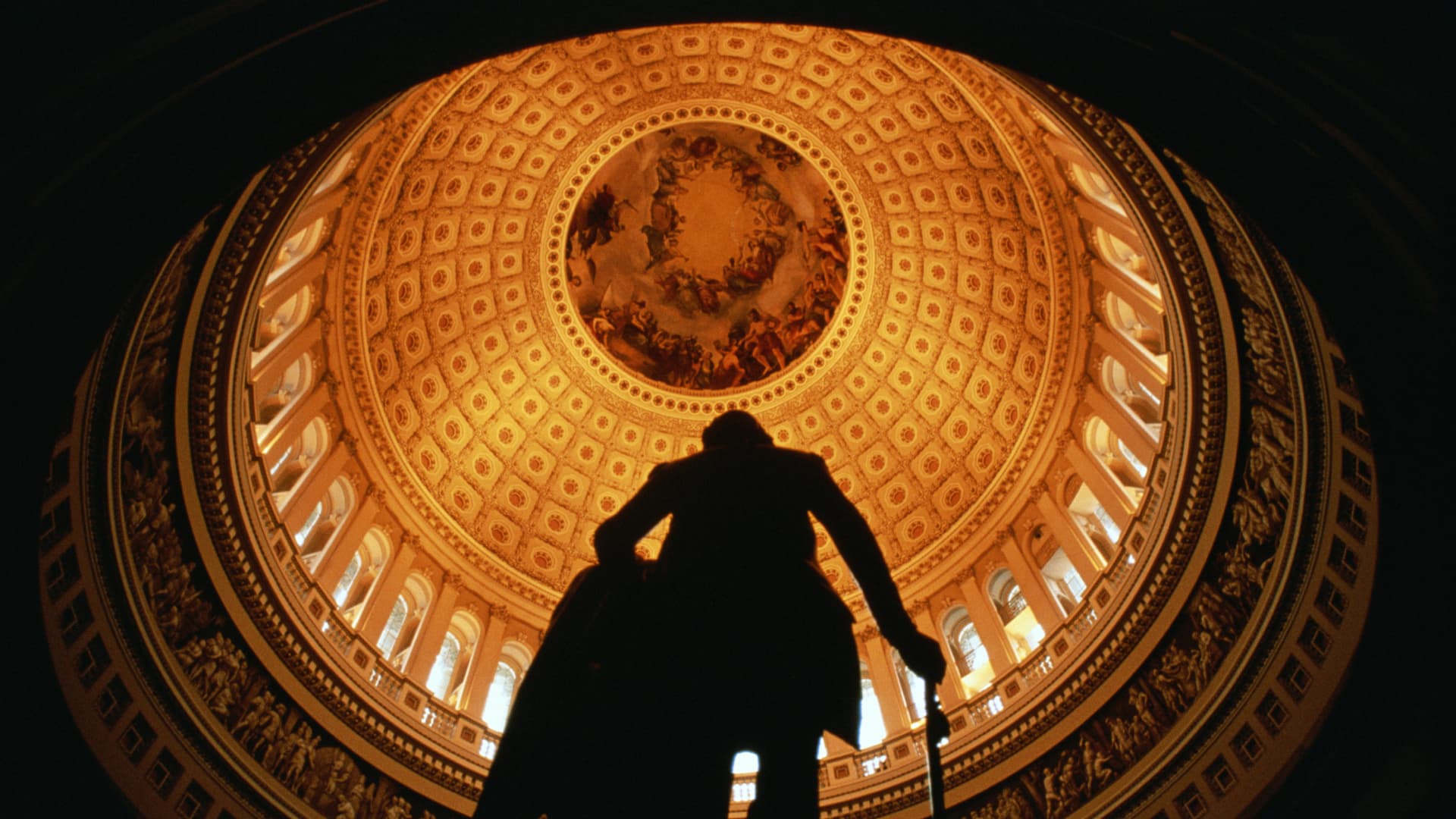The U.S. hit the debt ceiling on Thursday, which forced the Treasury Department to begin taking so-called “extraordinary measures” to continue paying the government’s bills.
Treasury Secretary Janet Yellen told lawmakers on Jan. 13 that these short-term moves, including suspending reinvestment in the workplace retirement plan for federal employees, could allow the government to pay its obligations until June, after which the U.S. would be in danger of defaulting on its debt.
Putting the politics of it aside, you may be wondering the million-dollar question: Is this situation likely to have a long-term effect on my money?
“In a word, no,” says Brad McMillan, chief investment officer for the Commonwealth Financial Network.
Of course, it’s a little more nuanced than that. Read on for the answers to the most relevant questions about the debt ceiling, and why, as a long-term investor, you shouldn’t be paying too much attention to the headlines.
Remind me — what’s the debt ceiling again?
The U.S. government funds much of its spending through debt, which is issued by the Treasury. The current limit is $31.4 trillion.
Raising this limit would allow the government to borrow more to cover spending already approved by Congress. Failure to raise the ceiling would mean the government would eventually fail to pay back its debts, including interest payments on Treasury bonds — technically putting the U.S. government in default.
Where does the debt ceiling stand now?
In political limbo. Republicans in the House of Representatives say they won’t agree to raise the limit unless the Biden administration agrees to cuts in spending.
Yellen and company are essentially finding money where they can in the meantime. A few examples: suspending new investments in the Civil Service Retirement and Disability Fund and the Postal Service Retiree Health Benefits Fund.
What could happen as the U.S. approaches a default?
Although some will debate technicalities, most experts will tell you that the U.S. has never defaulted on its debt and will very likely take steps to avoid a default this time around.
Because of its sterling reputation, U.S. debt is considered a risk-free “safety asset” in the world economy.
However, shakiness in U.S. creditworthiness could result in some market turmoil, like in 2011 when the U.S. faced a debt ceiling crisis and received a downgrade in its credit rating.
“That year we saw a lot of market volatility. Stocks really sold off around this event, with companies linked to the government selling off even further,” says Ross Mayfield, an investment strategy analyst at Baird Private Wealth Management. “It seems to take visceral market volatility to force politicians to the table.”
And if the U.S. actually defaults? Then what?
It’s difficult to say exactly what would happen if the U.S. couldn’t pay its bills, but it wouldn’t be your run-of-the-mill default.
“If a government like Argentina or Italy defaulted on its debt, it would be because they didn’t have the money in the form that the debt was owed in,” says McMillan. “If Italy borrows in dollars, they have to pay it back in dollars.”
However, any U.S. default would result from a political decision rather than an economic imperative. Since the U.S. debt is in dollars, “we can pay it back by printing more dollars,” says McMillan.
But there would be economic consequences, right?
The answer is yes. Aside from stock market volatility, you’d see ramifications across the economy. Any ding in the U.S. credit rating would likely raise rates on other types of debt, such as mortgages and auto loans, to account for additional risk.
And don’t forget that government spending (which would be cut under a default scenario) contributes to the overall economy, which is already in a precarious position — one that many experts say could soon tip things into recession territory.
So why shouldn’t I be worried?
Sumber: www.cnbc.com






